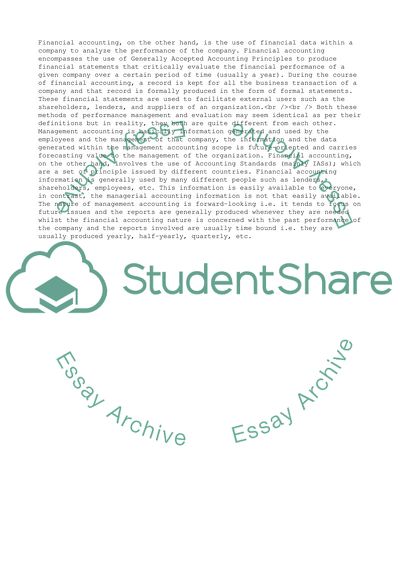Cite this document
(Financial and Management Accounting Assignment Example | Topics and Well Written Essays - 3049 words - 1, n.d.)
Financial and Management Accounting Assignment Example | Topics and Well Written Essays - 3049 words - 1. Retrieved from https://studentshare.org/management/1575179-there-are-limitations-but-financial-management-accounting-perform-a-fundamental-role-in-the-measurement-of-performance-within-the-organisation-critically-evaluate-the-statement
Financial and Management Accounting Assignment Example | Topics and Well Written Essays - 3049 words - 1. Retrieved from https://studentshare.org/management/1575179-there-are-limitations-but-financial-management-accounting-perform-a-fundamental-role-in-the-measurement-of-performance-within-the-organisation-critically-evaluate-the-statement
(Financial and Management Accounting Assignment Example | Topics and Well Written Essays - 3049 Words - 1)
Financial and Management Accounting Assignment Example | Topics and Well Written Essays - 3049 Words - 1. https://studentshare.org/management/1575179-there-are-limitations-but-financial-management-accounting-perform-a-fundamental-role-in-the-measurement-of-performance-within-the-organisation-critically-evaluate-the-statement.
Financial and Management Accounting Assignment Example | Topics and Well Written Essays - 3049 Words - 1. https://studentshare.org/management/1575179-there-are-limitations-but-financial-management-accounting-perform-a-fundamental-role-in-the-measurement-of-performance-within-the-organisation-critically-evaluate-the-statement.
“Financial and Management Accounting Assignment Example | Topics and Well Written Essays - 3049 Words - 1”, n.d. https://studentshare.org/management/1575179-there-are-limitations-but-financial-management-accounting-perform-a-fundamental-role-in-the-measurement-of-performance-within-the-organisation-critically-evaluate-the-statement.


